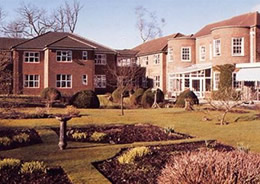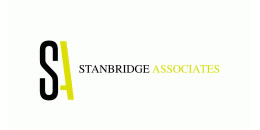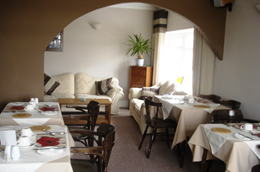-
Contact
Sales & Customer Service
0800 612 6537 support@safelincs.co.uk Live ChatDelivery Enquiries
0800 077 6149 - Resources
Fire & Safety Solutions
CALL OUR TEAM NOW 0800 612 6537
Lines open today 8am - 6pm
Free Delivery
on 100s of Products
Live Chat - Online
Instant help & Advice
Trade Discounts
and exclusive pricing
0% Credit Available
Open an account now
5 Star Customer Feedback
Fire Risk Assessment Case Studies
Case Study - Church of England Pensions Board
The Customer
The Church of England Pensions Board is a registered charity that has operated the Church's Housing Assistance for the Retired Ministry (CHARM) since it came into operation in 1983. The objective of the scheme is to assist retired clergy and church workers vacating tied housing with retirement accommodation.
There are seven supported housing schemes around the country in the Midlands, West Sussex, Devon, Gloucestershire, Surrey, North Yorkshire and Lancashire. Each has approximately 30 self-contained flats for retired members of the clergy. In addition, all of them have large kitchens where communal meals are prepared, chapels, small offices, dining rooms and most of them also have residents’ lounges.
The Challenge
Under the Regulatory Fire Safety Order 2005 it is a requirement for all employers or owners of premises to carry out a fire risk assessment (FRA) for every workplace or premises for which they are responsible.
The Solution

The Pensions Board engaged Safelincs, the approved supplier of fire safety products on the Parish Buying website, which was able to provide a very reasonable quotation to have each of the sites assessed for fire safety.
One of Safelincs’ professional fire risk assessors visited each of the seven locations, undertook a site analysis, recorded the findings and explained them to the person with responsibility for each site. The assessments looked at measures to reduce the risk of fire on the premises, reducing any potential spread of fire and the effective means of escape should a fire break out. Hazards were identified and eliminated or reduced.
The Benefit
A written FRA report was produced along with the necessary forms to allow each site to update its report in the future and to document any corrective actions that were carried out. The Church of England Pensions Board is now assured that every element of fire safety on each of its sites has been professionally assessed.
Ian Grace, Supported Housing Operations Manager for the Church of England Pensions Board commented: "Safelincs staff were courteous, easy to do business with and completed the work in a timely fashion."
Case Study - Stanbridge Associates Lincoln
The Customer
Stanbridge Associates is a firm of accountants, specialising in the medical profession, based in Lincoln.
The Challenge
The firm moved into newly renovated premises – a Victorian building close to the centre of Lincoln - and needed all fire safety facilities in the building to be overhauled in time for the opening.
The Solution

A fire risk assessor from Safelincs visited and undertook a full fire risk assessment. An extinguisher site survey was carried out and the fire alarm system was tested.
Safelincs then supplied and installed new service-free P50 extinguishers, fire door retainers and fire safety signage.
Choosing P50 extinguishers will save Stanbridge the annual cost of servicing since they have been designed so that a simple visual inspection once a year is all that is required. This inspection can be easily carried out by one of the Stanbridge employees and the engineer demonstrated the simple process at the time of installation. P50 extinguishers also do not require a refill after five years, reducing costs dramatically.
The Benefit
Stanbridge Associates had a complete overhaul of the fire prevention facilities at its new premises carried out quickly and cost-effectively.
“Safelincs provided us with a ‘one stop shop’ to enable us to meet all our fire safety requirements when we moved into our new offices,” said Catherine Cullen, Account Manager, Stanbridge Associates. “Their professional, friendly approach not only completed the work on time but also saved us money.”
Case Study - Guesthouse, Trusthorpe, Lincolnshire
The Customer
The guesthouse in question is a four star guest house, with six en-suite rooms, on the East Coast of Lincolnshire.
The Challenge
The owners of the Ramblers received a request from a County Council Fire Protection Officer to upgrade their existing alarm system to standard BS5839 pt 1 2002. This would have meant that they would have had to install a central fire control panel and interlinked fire and heat detectors. The installation of this system would have made it necessary to lay cables throughout the two storey building with its six guest rooms during the main holiday season! The thought of all the upheaval and possible loss of revenue coupled with the cost of the system - not insignificant for a small business - led the owners to seek help from Safelincs.
The Solution

Safelincs initially looked at the option of using a wireless system to BS5839 part 1 but the cost for this was still similar to a wired system with central alarm panel.
The MD of Safelincs then rang the fire safety officer in question who, after initial hesitation and after some internal discussions, agreed that the guest house, having only two floors and a relatively small number of bedrooms could be downgraded to a domestic fire alarm system falling in category BS5839 part 6 grade D.
It was agreed that the Ei radio-interlinked system with guaranteed 10 year lithium batteries was equivalent to a Grade D system. This system contains radio-interlinked manual break points as well as smoke and heat detectors. The installation was carried out by Safelincs in the space of two hours.
This case shows that fire risk assessments allow room for discussion and, as long as the safety of the people within a building is not compromised, the fire services and the councils’ fire protection officers are happy to discuss the best and most appropriate solution.
The Benefit
Taking up the solution negotiated and installed by Safelincs saved the owners nearly £3,000, a lot of disruption and potential loss of earnings whilst the work was being carried out.
In addition, the maintenance of the system can be carried out by the guest house owners by simply pressing one of the test buttons (a different one each time the system is tested) and each smoke detector has an integrated sounder, which improves general alarm sound levels significantly.
Reviewed: (v1.0). Our articles are reviewed regularly. However, any changes made to standards or legislation following the review date will not have been considered. Please note that we provide abridged, easy-to-understand guidance. To make detailed decisions about your fire safety provisions, you might require further advice or need to consult the full standards and legislation.



















